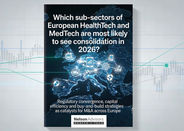Will we see an Apple EHR or PHR in 2020?
- Lloyd Price
- Apr 7, 2020
- 6 min read

I believe Apple has a 2 year vision to make the iPhone a 'One-Stop Shop' for medical information, records and data ... so expect an Apple electronic health record in 2020.
Apple have been actively involved in the Argonaut Project for the last 18 months deepening their knowledge and technical expertise of Health IT, electronic medical records and personal health records.
What is the Argonaut Project?
The Argonaut Project is an initiative dedicated to accelerating the development and adoption of HL7's Fast Healthcare Interoperability Resources. FHIR is a standards framework featuring a RESTful API designed to enable the exchange of health care information between applications and systems. The FHIR framework is designed to allow implementation of health care standards across all systems, devices and applications, regardless of the variability caused by diverse health care processes.
The Argonaut Project comprises both health care IT industry provider organizations and electronic health records vendors, including Mayo Clinic, Intermountain Healthcare, Partners HealthCare, Epic Systems and Athenahealth. Argonaut Project participants are working together to modernize nationwide health care interoperability through the increased adoption and development of the HL7 FHIR framework and API. Enabling nationwide health care interoperability is an extremely difficult goal to achieve as there are hundreds of EHR systems available today and thousands of EHR system implementations.

Apple and the Argonaut Project
According to multiple sources and industry rumours, Apple has a "secretive team" operating within its health unit currently communicating with developers, hospitals, insurers and interoperability specialists about storing clinical data on the new iPhone 8. In theory, with all of their medical and patient data at their fingertips, iPhone users can access a much broader view of their health, learn from insights and share as much or as little information as they wish with doctors and healthcare professionals.
Apple has been hiring developers familiar with protocols dictating the transfer of electronic health records and has talked with several health IT industry groups, including "The Argonaut Project," which promotes the adoption of open standards for health information, and "The Carin Alliance," a group aiming to give patients more control over their medical data.
A centralized way to store all of a person's health data would allow the medical community to overcome existing barriers that prevent the transfer of patient information between medical providers. Hospitals and doctors offices often don't have a simple way to transfer patient information, and online medical portals are sometimes difficult to use with little info available to patients, Apple already allows iPhone users to record medical data and health information gathered by the Apple Watch and other connected devices in the built-in Health app, and it has delved into health research with CareKit and ResearchKit, but based on these rumors, the company's goal is to expand its health efforts far further in the future.

Patent US 9723997 B1 : Electronic device that computes health data
Further evidence of Apple's potential to launch an electronic health record can be seen in its recent US patent filing 9723997 B1 for an "electronic device that computes health data".
INTRODUCTION
An electronic device includes a camera, an ambient light sensor, and a proximity sensor. The electronic device uses one or more of the camera and the proximity sensor to emit light into a body part of a user touching a surface of the electronic device and one or more of the camera, the ambient light sensor, and the proximity sensor to receive at least part of the emitted light reflected by the body part of the user.
The electronic device computes health data of the user based upon sensor data regarding the received light. In some implementations, the electronic device may also include one or more electrical contacts that contact one or more body parts of the user. In such implementations, the health data may be further computed based on the an electrical measurement obtained using the electrical contacts.

SUMMARY
The present disclosure discloses systems, apparatuses, and methods related to an electric device that computes health data. An electronic device may include a camera, an ambient light sensor, and a proximity sensor. The electronic device may use one or more of the camera and the proximity sensor to emit light into a body part of a user touching a surface of the electronic device and one or more of the camera, the ambient light sensor, and the proximity sensor to receive at least part of the emitted light reflected by the body part of the user. The electronic device may compute health data of the user based upon sensor data regarding the received light. In some implementations, the electronic device may also include one or more electrical contacts that contact one or more body parts of the user. In such implementations, the health data may be further computed based on the an electrical measurement obtained using the electrical contacts.
In some implementations, the electronic device may utilize the camera to determine the user's body part is misaligned with the camera, the ambient light sensor, and the proximity sensor for purposes of detecting the information about the body part of the user. In such implementations, the electronic device may provide guidance to correct the misalignment.
In various embodiments, a mobile personal computing device may include a camera, an ambient light sensor, a proximity sensor, and a processing unit communicably coupled to the camera, the ambient light sensor, and the proximity sensor. The processing unit may be configured to: use at least one of camera and a proximity sensor to emit light into a body part of a user touching a surface of the mobile personal computing device; use at least one of the camera, an ambient light sensor, or the proximity sensor to receive at least part of the emitted light reflected by the body part of the user and generate sensor data; and computing health data of the user, utilizing the processing unit, using at least the sensor data regarding the received light.
In some embodiments, a method for using a mobile personal computing device to obtain health data may include: using at least one of camera and a proximity sensor to emit light into a body part of a user touching a surface of the device; using at least one of the camera, an ambient light sensor, or the proximity sensor to receive at least part of the emitted light reflected by the body part of the user and generate sensor data; and computing health data of the user, utilizing the processing unit, using at least the sensor data regarding the received light.
In one or more embodiments, a method for guiding use of a mobile personal computing device to obtain health data may include: detecting, utilizing a camera, a profile of a body part of a user contacting the camera; determining, using the profile, if the body part is misaligned with a combination of the camera, an ambient light sensor, and a proximity sensor for purposes of obtaining health data for the user; and providing guidance to correct the misalignment.
In various embodiments, a computer program product including a non-transitory storage medium may include a first set of instructions, stored in the non-transitory storage medium, executable by at least one processing unit to use at least one of a camera and a proximity sensor to emit light into a body part of a user touching a surface of a mobile personal computing device; a second set of instructions, stored in the non-transitory storage medium, executable by the least one processing unit to use at least one of the camera, an ambient light sensor, or the proximity sensor to receive at least part of the emitted light reflected by the body part of the user and generate sensor data; and a third set of instructions, stored in the non-transitory storage medium, executable by the least one processing unit to compute health data of the user using at least the sensor data regarding the received light.
It is to be understood that both the foregoing general description and the following detailed description are for purposes of example and explanation and do not necessarily limit the present disclosure. The accompanying drawings, which are incorporated in and constitute a part of the specification, illustrate subject matter of the disclosure. Together, the descriptions and the drawings serve to explain the principles of the disclosure.

From OS developers to health providers
CB Insights reportedly recently that Apple were not the only Tech company interested in the mobile and electronic health record market, their analyst stated ...
"Apple and Google are competing to capture users’ health and wellness data via connected devices. Google is looking to create a suite of alternative wearable devices and sensors for harnessing real-time health diagnostics.
Google is mainly interested in creating novel forms of noninvasive sensors for identifying when a user of a wearable is injured or at risk. These wearables include electronic skin adhesives that collect diagnostic information, and more.
Apple’s health innovations primarily rely on the existing sensors, camera, and computing power already in Apple products such as the iPhone, Apple Watch and even AirPods.
Using the iPhone or Apple Watch, collected wellness data can be stored and shared with physicians and caretakers. Similarly, Apple has designs for enabling a patient to initiate a telemedicine session for treatment using a mobile device.
Apple’s focus on wellness and lifestyle management, combined with the AirPods and the AI assistant Siri, could mean that Apple will explore the coaching and fitness space to proactively keep people healthy."


















































Comments